Even if you don’t plan on making a back country trip to Norway any time soon, these tiny cabins may give you a few ideas on how to create a tiny house that melds nearly seamlessly with its natural surroundings. Koiene (pronounced koi-eh-n) are a system of tiny, convenient cabins scattered around the countryside of Trøndelag, Norway for use by anyone who’s in the area for hiking, fishing, foraging, hunting, cross country skiing or snowshoeing.
The simple, little structures can be rented through a website that specializes in memberships for these types of vacation cabins. The site and the cabins are run voluntarily by groups of students. The cabins are named after the area they are in and these multi-syllabic locations are distinctive from each other: some are on a river or creek, some on top of a mountains, some by the lake or other larger body of water.
The koien rent for about 30 to 60 kroner (about $5-$10) per person per night and there are separate prices for members and non-members. Many of the cabins can fit up to 8 or 10 people, but none of them have electricity. All cabins have a propane or primus stove and are equipped with cutlery, plates, cups and pots and pans for cooking. Many of the cabins have an outhouse, but bathing options are limited: you might have to jump into that local stream or lake.
Photos by NTNUI Koiene
By Christina Nellemann for the [Tiny House Blog]

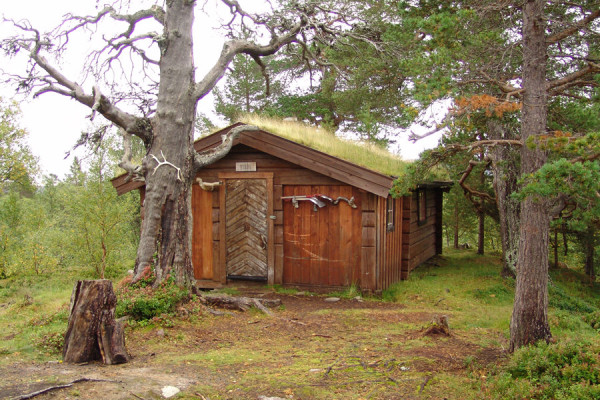




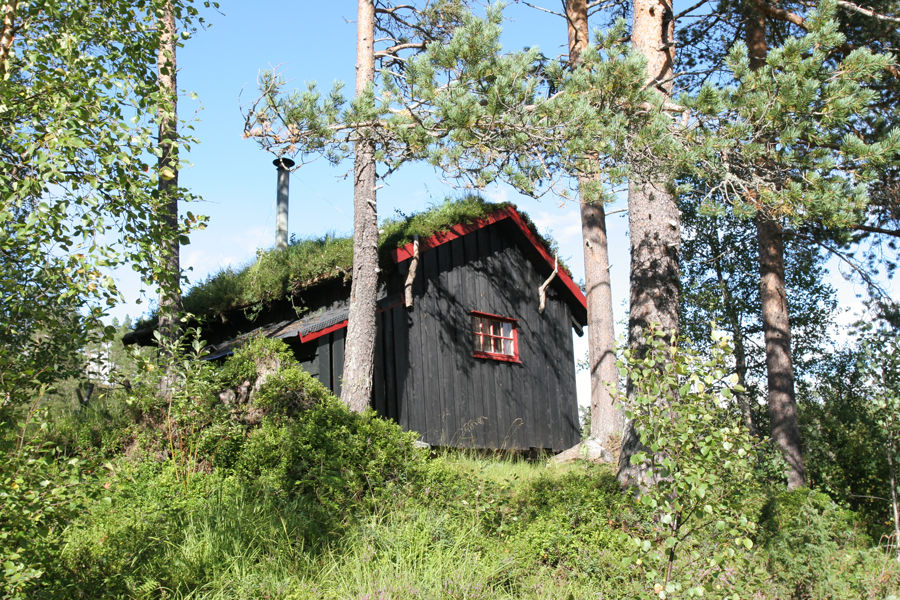


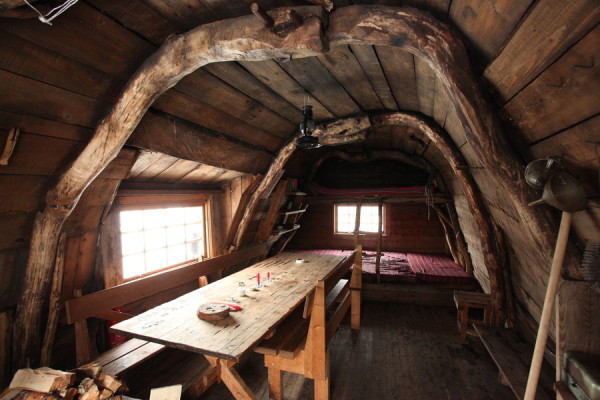
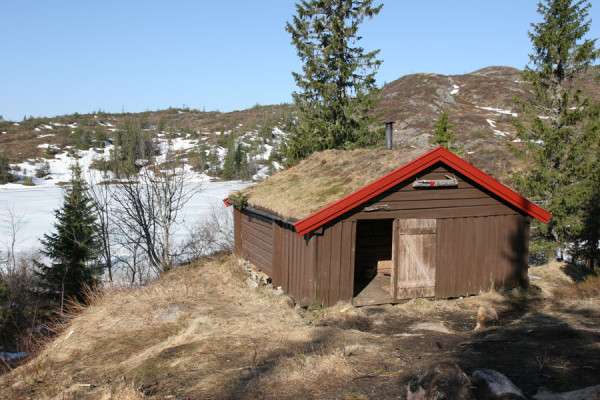
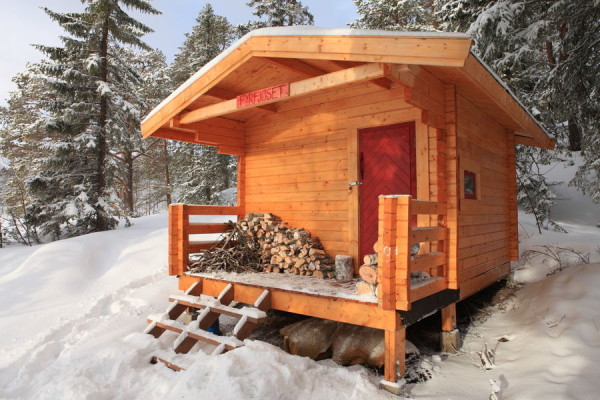
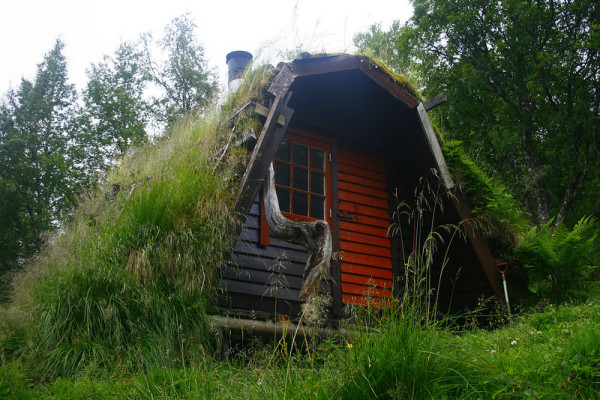
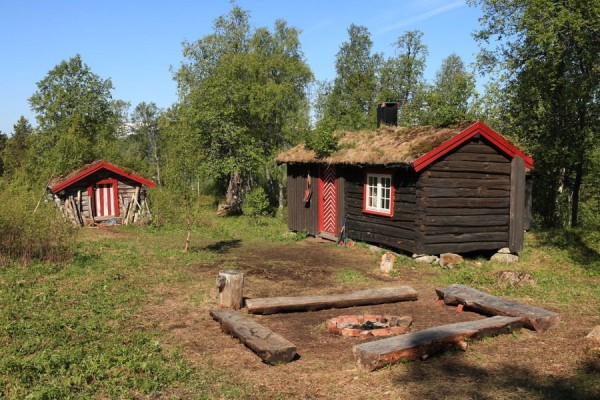
THESE.ARE.SO.COOL
So cool…
Pretty neat, and a couple of them are really very basic. But I bet is a storm would be so welcoming.
Some of those look like they could be Hobbit vacation cottages. What a great idea.
LOVE!!!!!!!!!!!!!!!!!!
Wow, I love these! The first one reminds me of the Hobbit’s house 😛
I’ve stayed in the one fourth from the bottom (Fosenkoia) – great little cabin! These aren’t only located in Trøndelag though, they’re common throughout the entire country through the tourist association (Den Norske Turistforening). Not all are tiny, but the further you get into the wilderness, the smaller and more basic these cabins get. They’re wonderful!
Thanks for the information, Jeff. How was your stay in Fosenkoia? :0)
Coming from a family where the shortest woman is 5’8″ and the men are in constant danger from ceiling fans, I would like to know if you can stand up in these. They are adorable, but are they mostly for use for sleeping and eating after a day enjoying the outdoors? I’m two generations from Bergen, and would love to go back.
Lucy, you could definitely stand up in this one. I can’t vouch for the others from NTNUI, but I imagine you can stand up in most of them. If I recall correctly you could sleep up to 10 people in this one and it would be very cozy with that many. We had 7 and that was a comfortable limit. Great for coming back to after a day of hiking, but I wouldn’t want to stay there for many days just in the cabin.
Christina, our stay was wonderful! We had rain on the one day, but Norwegian weather is always unpredictable like that.
If people want to peruse the cabins available throughout the country (and thus perhaps get some ideas of small cabins), check out the selection at http://ut.no/hytte.
all that is needed to stay dry and warm. What a thoughtful country.The basic huts are great,warm and inviting .
Love these cabins! Especially the ones that look like hobbit holes. What an experience to rent one of these!
Similar huts can be found all over Finnish Lapland and presumably also in Sweden. These all are normally free for all travelers. They are located along Wilderness hiking trails and are also used by reindeer herders during winter.
Directory of ones maintained by the Finnish government: http://www.outdoors.fi/HUTS/Pages/Default.aspx
Nice collection of pictures from public and private huts (autio tupa – uninhabited hut or kammi – turf hurt, etc) all over Lapland:
http://www.patikka.net/Eramaa_alueet.htm
Thanks for the information, Ziggi. Ahhh…those hardy and welcoming Scandinavians.
Lovely! Even the more rustic of these rustic little cabins appears to be totally liveable (albeit short-term, as in, a welcome stop-off during a few days’ hike (but ‘I wouldn’t wanna live there’ applies, for ME, anyway). Considering the alternative might be having to sleep in the great wide open, the availabilty of these little shelters would surely be a Godsend: light a lantern or two, start a warm fire to heat up water for a hot cup of coup or to cook small game, clean dry sleeping pallets off the ground (when coupled with your sleeping bag or spread-out jackets, sweatshirts, etc)… all would be HEAVENLY gifts to the weary and/or lost traveler(s)… 😉
Ziggi – thanks for an hour of pure joy, looking through those pictures! More interior pictures would be welcome.
Amazing construction in some of these – naturally curved logs carved into mortises and tenons (sort of) and plugged together to make arches. That’s a concept to keep in the back of your mind.
Wonderful post! Thanks for opening our eyes (who didn’t know about these!). I have a friend living in Norway, will be sending this to him to check out!
These are awesome, I look forward to seeing these each and everytime in amazement and hoping one day soon that I can one day I’ll be sending you my pic of my new Tiny Home dream house.
Would like to know how to construct a few of these in the USA. Really rustic and charming!
I find the most rustic ones the most appealing. I think any of them would be totally livable. Of course, some would definitely need another one to use for storage and such. But, they are absolutely delightful. I need to plan a trip and take a long hike.
The States need to losen up and let us live in dwellings that resonate with us as individuals. How else can we have a house that is truly our HOME?
I so agree with you!
I believe the US National Park Service has some of these in the far back country of some National Parks. Great idea for hikers and outdoor lovers.
Love the living roofs and the tenth picture showing an interior with beautiful arched beams. I could so live there. I am inspired to put up a living roof on my bedroom where the roof is a relatively shallow pitch.
Wow…those are so Cool! Love them! Thanks for sharing. : )
These little houses are intriguing–and utilitarian. I did see a house in Sweden that had grass on the roof–with flowers on the ridgepole.
Wow, what’s up with Norwegians being so good at living roofs? I’d like to see more of that in Canada!
i will visit someday norway and spend wonderful nights there
I invite you to Polish. I am looking for volunteers to create an eco-village people in a beautiful valley near the center of European music of Krzysztof Penderecki.
Great blog The cabins look interesting. I noticed the murphy bed I been looking for pictures of Murphy baths they were sold in the early 1900s through Sears Roebuck and Montgomery Ward catalogs I saw one on History channel and have been drawing up a more up to date version with a steam-punk style and I want to see how they worked out the plumbing all to be integrated into a Gypsy/ early railroad style cottage design.
Are there links about building the dome shaped plant covered structures or the quonset hut one?? I’d love to have one on a hill at the back of my property!
hello sir
me like photos and one live very cabin love have one look build one wild ?
I will build one with curved live oak timbers in St Helena Parish in Louisiana.
These types of vacation cabins are awesome, i would love to stay in one. I have only every stayed in a standard camping pod not something as lavish as this.
These small Norwegian buildings in the lovely countryside are so beautiful. Here in the UK where I live I wish I could buy some woodland and live in one, but sadly it is not allowed. The usual reason given is that it would spoil the look of the countryside – which is utter rubbish because the countryside is where such happy places belong. xxx Nick ps In so many countries they are allowed, but not here. Why must I emigrate in order to find peace? 🙁